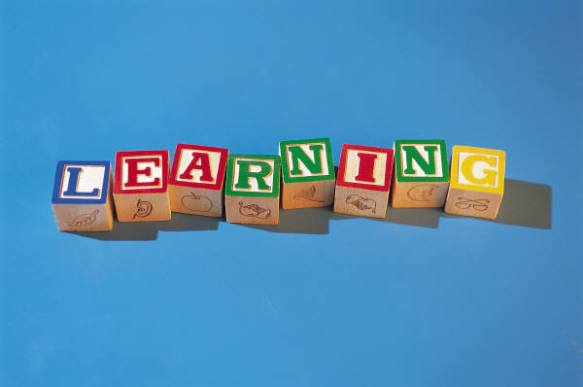by Neva Fenno, M.S.Ed., MLIS
 I was reviewing some articles about special education service delivery and came across a list of current issues that are on the minds of SPED teachers and leaders. One of them was:
I was reviewing some articles about special education service delivery and came across a list of current issues that are on the minds of SPED teachers and leaders. One of them was:
How should children with disabilities be disciplined when they pose a threat to school staff and to other students?
Teaching is an isolating activity; at least it certainly seems so at times. Between the bells, you are in a room with 15 students who are diverse in many ways. They have different intellectual abilities, some have physical disabilities that need special attention and some, if not most, have behavioral issues that affect the way your classroom is managed on a day-to-day basis. This behavior piece has always been my greatest challenge. What is the balance between discipline for a single incident of misbehavior and a consistent plan or approach for managing difficult behaviors among all of your challenging students?
Obviously, the latter is what you aim for. Once you have a consistent plan in place and everyone knows the rules, shouldn’t things fall into place and discipline become easier? It certainly can become easier, but there are always incidents of behavior that defy your classroom routine. Some students bring pain and emotional stress into your classroom that you cannot even imagine. The stress is like an overfilled balloon; it eventually needs to be released, and you are the only thing keeping the explosion from hurting that student or others in your care.
SPED teachers receive some specialized training in defusing tensions, but this never seems enough when a child explodes. When the explosion becomes a fight between two students, the instinct is to jump in and pull them apart. We know from our training, though, that this is the wrong thing to do. You could be injured, thus leaving no one in charge, and further injuries can happen. The procedure is always to get assistance. I remember when classrooms had no phones and we had no idea what a cell phone was.
 A few years ago, we brought in a crisis intervention team to provide training for our teachers in handling just such events. We used a company called CPI; they sent a team to our district and managed a four-day seminar in non-violent crisis intervention including restraint training: how to touch or otherwise handle a student in crisis who needs to be restrained so he doesn’t hurt himself or others. It was one of the best investments we’ve made for our staff. It was so effective that we’ve expanded the training to our entire staff on a voluntary basis. We may even make it mandatory. One of the great things they provided was to give extra training to some of our own teachers in a teach-the-teacher model so we could do our own training after they left. We used a combination of city and grant funds (IDEA federal funds) to transport, house and pay the team for their efforts.
A few years ago, we brought in a crisis intervention team to provide training for our teachers in handling just such events. We used a company called CPI; they sent a team to our district and managed a four-day seminar in non-violent crisis intervention including restraint training: how to touch or otherwise handle a student in crisis who needs to be restrained so he doesn’t hurt himself or others. It was one of the best investments we’ve made for our staff. It was so effective that we’ve expanded the training to our entire staff on a voluntary basis. We may even make it mandatory. One of the great things they provided was to give extra training to some of our own teachers in a teach-the-teacher model so we could do our own training after they left. We used a combination of city and grant funds (IDEA federal funds) to transport, house and pay the team for their efforts.
During the training, the word respect kept popping up, and it’s an important element in the training. If all parties are respected during an episode that requires physical restraint, the procedure is easier and certainly much safer. The word respect seems to calm people down somehow. Emotions can run high, especially among children who have few resources to manage them. Once the initial incident is defused and the child is returned to the classroom, teachers can work together to try to find out why it happened in the first place. It may be necessary to bring the parents in to see if there’s something in the environment at home that is causing problems. When the whole family is involved, problem solving can proceed more effectively.
Obviously, this is a greatly simplified description of how a school district can approach behavior management programs.
Some resources for finding solutions:
- CPI – Crisis Prevention Institute
- Handle With Care (another solution provider)
- List of Providers
- Restraint Training in Action – YouTube
- Emotional De-Escalation
- Top Ten De-Escalation Tips
Let me know how your school or district manages behavior.
Grant Name: Ross Foundation Educational Grants
Funded By: The Dorothea Haus Ross Foundation
Description: Giving on a national basis to advance the moral, mental, and physical well-being of children of all races and creeds; to aid and assist in providing for the basic needs of food, shelter, and education of such children by whatever means and methods necessary or advisable; to prevent by medical research or otherwise the mental and physical handicaps of children. Funding also provided for the research of pediatric diseases.
Program Areas: Disabilities, Early Childhood, General Education, Health/PE, Special Education
Eligibility: Private School, Faith-based, Other
Proposal Deadline: Ongoing
Annual Total Amount: $400,000.00 – $560,000.00
Average Amount: $1,000.000 – $15,000.00
Address: 1036 Monroe Avenue, Rochester, NY 14620
Telephone: 585-473-6006
Email: info@dhrossfoundation.org
Website: The Dorothea Haus Ross Foundation
Availability: All States








